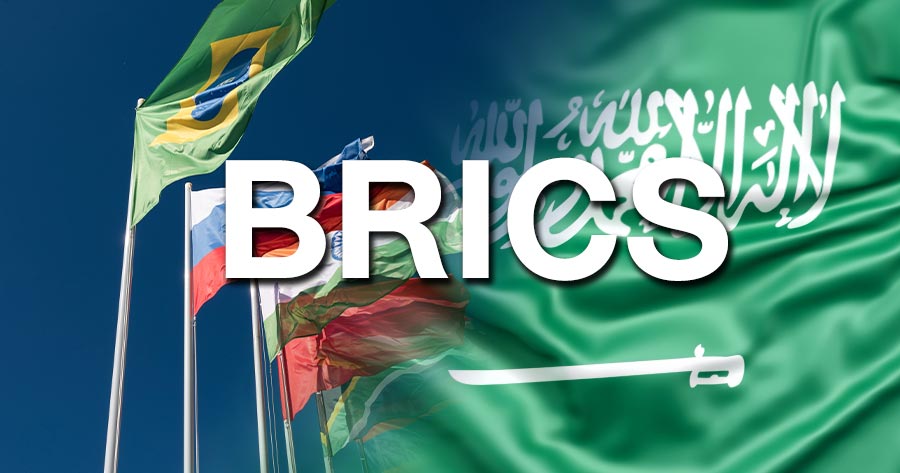Saudi Arabia, the OPEC heavy weight, announced last Thursday to join the BRICS coalition along with other 6 nations at BRICS summit, South Africa. BRICS or the group of big 5 emerging economies – Brazil, Russia, India, China and South Africa, will expand as more countries joining in – Argentina, Egypt, Ethiopia, Iran, Saudi Arabia, United Arab Emirate, which will be effective in January of 2024.
Some might see this movement as to unite the Global South countries, even the Islamic rivals like Iran and Saudi Arabia agree to join, going against the Global North – US plus EU as the domination of US on world order begins to shift into the multi-polar world. The Brazilian leader Luiz Inácio Lula da Silva claimed that, the soon to be 12 countries coalition will have up to 37% of the world’s GDP in terms of its purchasing power, and 46% in terms of the world population. More importantly, BRICS is open for more members.
The Organization of the Petroleum Exporting Countries (OPEC) and its allies known as OPEC+ have been controlling the oil market for decades outside of the US. The production cut from the group of the world largest oil producers since the Covid-19 pandemic began prompts the US president Joe Biden to personally meet with Saudi King Salman bin Abdulaziz and Crown Prince Mohammed bin Salman at Riyadh to ask for more production boost to lower burden of petrol users over higher oil prices. Further production cut was the answer for Biden at that time.
The addition of Saudi Arabia, the UAE, and Iran results in BRICS having three of the world’s largest oil exporters, which accounts to 42% of global oil supply. Though the management of the oil market will remain under OPEC’s purview, the new allies could have a big impact on the energy market with the three new big producers from the group and also other members that account for one third of world’s GDP.
Moreover, BRICS has two of the world’s top economies which are China and India, who refuse to join the “price cap coalition” targeting Russia oil. The move cements the opposition of the group’s leaders and the rest of the world that sanctions the Kremlin. This could further help Russia in avoiding the financial sanction from the West.
In recent years, there’s some handshake on oil trading between the Global South countries to settle with their own local currencies like China and Suadi Arabia would settle in Yuan deal earlier this year, hence many coin the term “Petro-Yuan” to challenge the dominant “Petro-Dollar”.
Petrodollar was established after WWII in a deal between US and Middle East countries to sell oil quoted in US dollar while US oil companies will help facilitate the process and US force will keep protect these countries as an ally, especially the Saudi Arabia that have a recent sour relationship with US. Saudi has sold nearly $80 billion US treasury instruments to the six-year low of $108.1 billion in June, hinting the lesser need of US dollar.
The Petrodollar has a liquidity advantage over Petroyuan as the US dollar can be easily convert to other currencies and invested worldwide, including in the $13.4 trillion Eurodollar market for short-term dollar denominated deposits in European banks. On the other hand, the heavily controlled Chinese Yuan or Renminbi (RMB) could only use to trade with China or any other countries that heavily trade with China.
Meanwhile, Many countries who hold the world largest critical mineral sources for Green energy are joining BRICS as well, for example, Argentina who got third largest of lithium reserve, forecasted by JPMorgan to surpass the second, Chilie by 2030 at 16% of world share. Brazil also has large nickel and copper reserves and already have a deal with Saudi through $2.6 billion of 10% stake in Vale, the Brazil’s largest miner for a massive EV production. Furthermore, Iran has the largest zinc and second largest copper deposit in the unutilized Sarcheshneh mine, according to CSIS.
In total, BRICS would have 72% of rare earths (and three of the five countries with the largest reserves). The expanded bloc would also hold 75% of world’s manganese, 50% of the world’s graphite, 28% of the world’s nickel, and 10% of the world’s copper (excluding Iran’s reserves), according to the same source.





